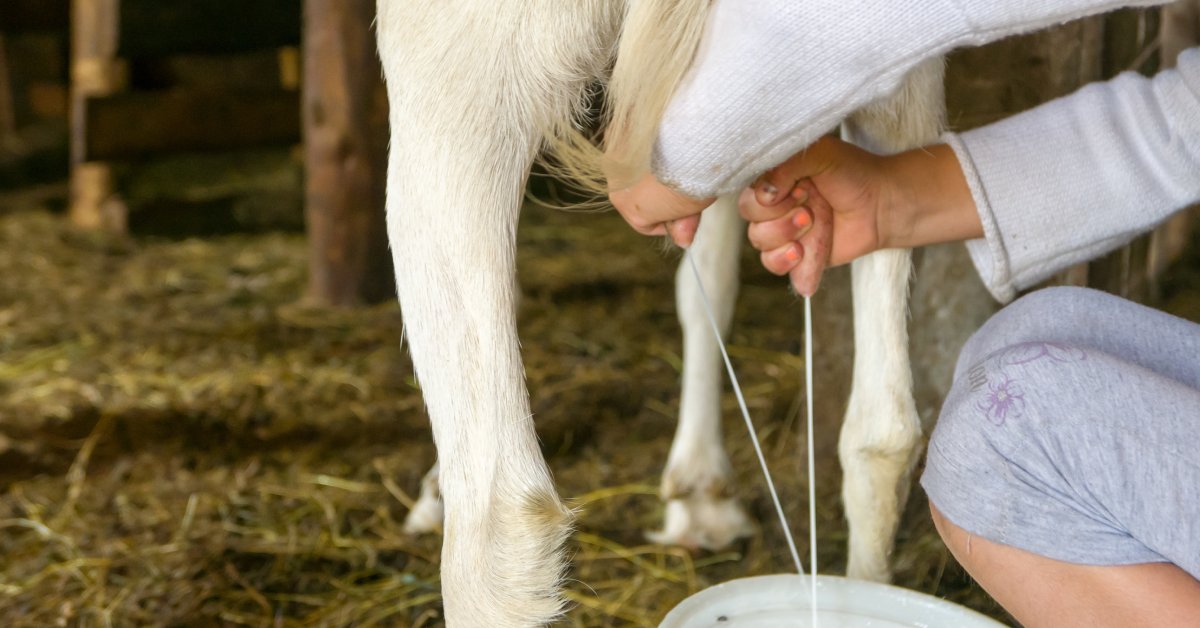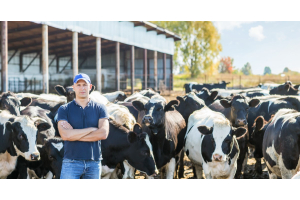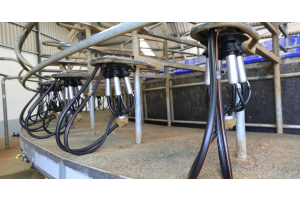Common Goat Milking Problems & Solutions

Milking goats may seem straightforward, but even seasoned ranchers and dairy operators encounter challenges that impact their efficiency and milk yield. Understanding these issues, their causes, and effective solutions is vital for maintaining healthy goats and producing high-quality milk.
Explore these common goat milking problems and practical solutions to address them. This guide provides actionable advice tailored to your needs, whether you’re managing a small homestead or a commercial dairy operation.
Mastitis
Mastitis poses a significant challenge to goat dairy operations, as it directly affects milk production and udder health. This inflammation of the udder, caused by bacteria, viruses, or fungi, can show up as a hardened udder, bloody milk, and fever in the affected goat. Effective prevention begins with meticulous hygiene during the milking process, which includes sanitizing your equipment and the goat’s udder.
Regular testing with a California Mastitis Test (CMT) identifies early infections when they are still manageable. Severe cases may necessitate antibiotics, but identification of mastitis at an early stage significantly reduces the risk of prolonged treatments and milk loss.
Teat Obstructions
Teat obstructions may arise from granular debris, clots in the udder, or congenital abnormalities. These blockages limit milk flow, causing pain for the goat and frustration for the handler. Resolving blockages often requires gentle manual massaging of the udder to dislodge the obstruction.
Consulting a veterinarian is advisable for more persistent or anatomical issues to restore proper milk flow. Preventing teat obstructions involves consistent monitoring during milking and ensuring the goats receive a balanced diet to minimize clots or calcium buildups internally.
Leaky Teats
Weak sphincter muscles in the goat’s teats or past injuries to the udder often lead to milk leaking. Leaky teats pose a hygiene risk since they create a permissive environment for bacterial growth, which causes infections. Applying adhesive teat tape to the affected area is a helpful solution to this common goat milking problem, offering temporary containment, particularly during milking.
However, chronic cases may require removing the affected goat from the milking herd to prevent contamination and allow for recovery. Ensuring consistent and gentle milking techniques reduces the risk of trauma that may cause leaks over time.
Udder Trauma
Accidental injuries such as lacerations, bruises, or hematomas on the udder significantly impact milking efficiency and your goat’s health. Minor trauma is often treatable with a combination of antiseptic cleaning and soothing applications, such as herbal ointments, to aid healing.
Severe cases, including deep lacerations or extensive bleeding, require immediate veterinary intervention to prevent further complications. Reducing the risk of udder injuries involves keeping milking areas free from sharp objects and ensuring living spaces provide ample room for goats to move freely without injury.
Hygiene Issues
Maintaining stringent sanitation practices is one of the most effective ways to prevent infections and produce high-quality milk. Dirty milk machines for goats or insanitary udders transfer harmful pathogens, affecting the goat’s health and the product’s quality.
Thoroughly clean the udders with an antiseptic cleaning solution and rinse them appropriately before each milking session. Equally critical is cleaning your milking equipment and milking tools after each use to ensure there is no residue or biofilm that could be a breeding ground for bacteria.
Milk Machine Issues


Faulty or poorly maintained milk machines harm a goat’s udders, leading to infections or reduced milk production. Regularly check and maintain your goat milk machines to ensure proper suction settings that do not overstrain the teats.
Replacing worn-out components, such as rubber liners, is equally important. Investing in high-quality machines and thoroughly cleaning them reduces the risk of introducing bacteria or causing injurious strain.
Milk Letdown Problems
Stress, fear, or physical discomfort often hinders milk flow, making the process frustrating for farmers and potentially painful for goats. A calm, quiet milking environment significantly helps the goat relax, encouraging proper milk ejection from the udder.
Gentle handling techniques also play a pivotal role in ensuring comfort and cooperation. Familiarizing the goats with their handlers and setting a consistent milking routine further minimizes stress and creates an environment conducive to easy milk letdown.
Improper Milking Techniques
Incorrect milking methods, such as excessive pressure or inconsistent strokes, lead to teat injuries and incomplete milking. Improper milking impacts the goat’s comfort and reduces yield over time. Instead, practice consistent, gentle milking motions that simulate the natural nursing of a kid.
For beginners, training sessions or consultations with experienced handlers provide valuable guidance on technique. Regularly rotating between hand milking and mechanical methods can also reduce long-term stress on the udders.
Nutritional Deficiencies
The quality of a goat’s diet has a direct impact on milk production and udder health. Deficiencies in essential nutrients, such as calcium, vitamin D, and protein, lead to poor milk yield and weakened immunity.
Offering a balanced diet that includes high-quality forage, grains, and mineral supplements tailored to a goat’s dietary needs is critical. Periodic health checks and consulting a livestock nutritionist can help you identify and promptly address any issues.
Overmilking


Overmilking occurs when handlers excessively or irregularly milk their goats, leading to udder stress and a reduction in milk quality. Sticking to a consistent milking schedule can prevent these issues, allowing the udders to replenish naturally and remain productive.
Monitoring yield and adjusting schedules as necessary ensures that the process meets the goat’s natural capacity while minimizing stress. Avoiding overuse of milk machines for goats also prevents unnecessary trauma to the udder.
Kid Damage
Overzealous kids can cause injuries to the their mothers’ teats when they nurse, including abrasions or excessive swelling. Carefully monitor the kids as they nurse to ensure they’re not causing undue stress to the doe.
If injuries occur, temporarily separating the kids and bottle-feeding them with the doe’s milk ensures continued nutrition while giving her time to recover. Providing teething toys or distractions for active kids also minimizes problematic suckling behaviors.
Environmental Factors
Poor living conditions, such as dirty bedding or harsh weather exposure, lead to infections and overall compromised health. Maintaining clean, dry housing areas with adequate ventilation reduces the pathogens to which goats are regularly exposed.
During colder months or inclement weather, providing sheltered areas with ample bedding helps keep goats warm and prevents stress-related health issues. Regular inspections of living conditions are essential for proactive disease prevention.
Milking goats effectively requires attention to detail, ongoing care, and prompt responses to common challenges. Safeguard your herd’s health while producing high-quality milk by addressing these potential problems with the right tools and techniques.
Implementing Parts Dept’s equipment will make a notable difference in day-to-day operations for farmers and producers ready to enhance their practices or troubleshoot ongoing issues,. Always aim for continuous learning and improvement to ensure your dairy operation thrives.










